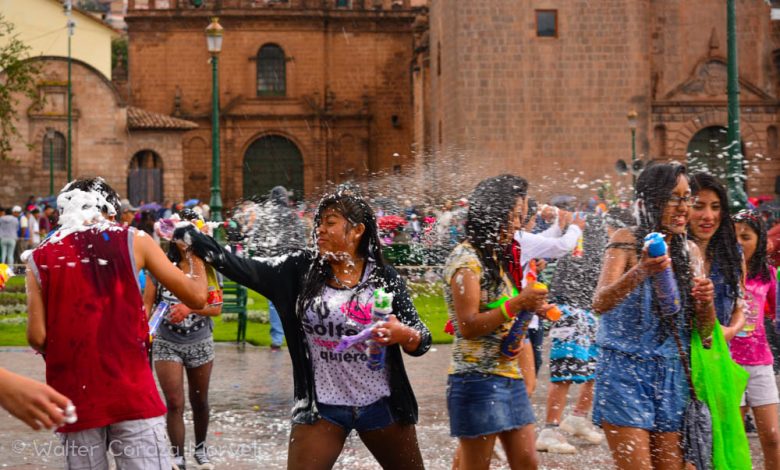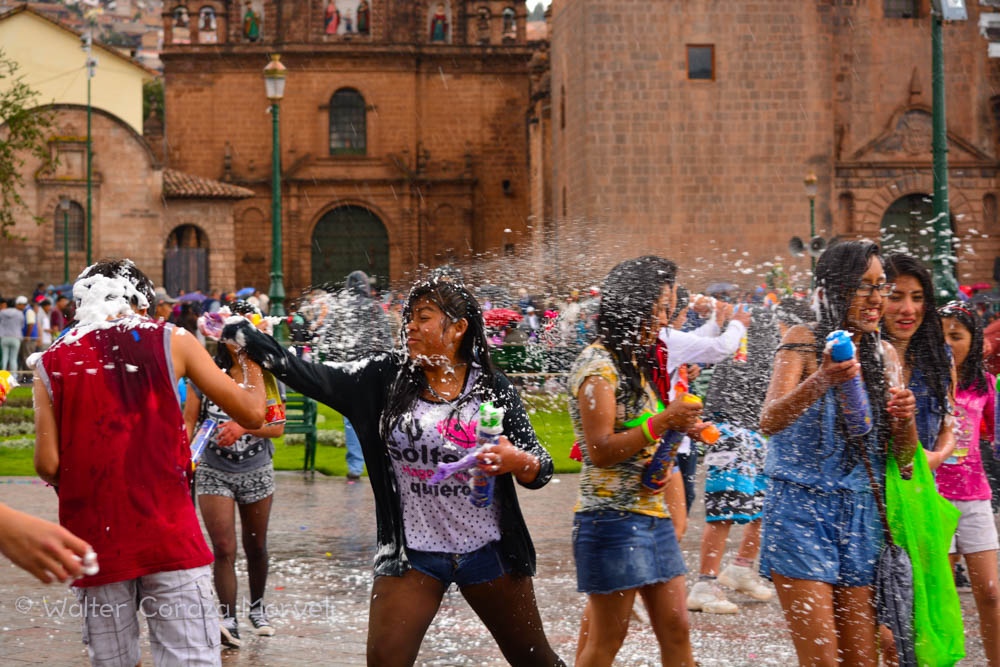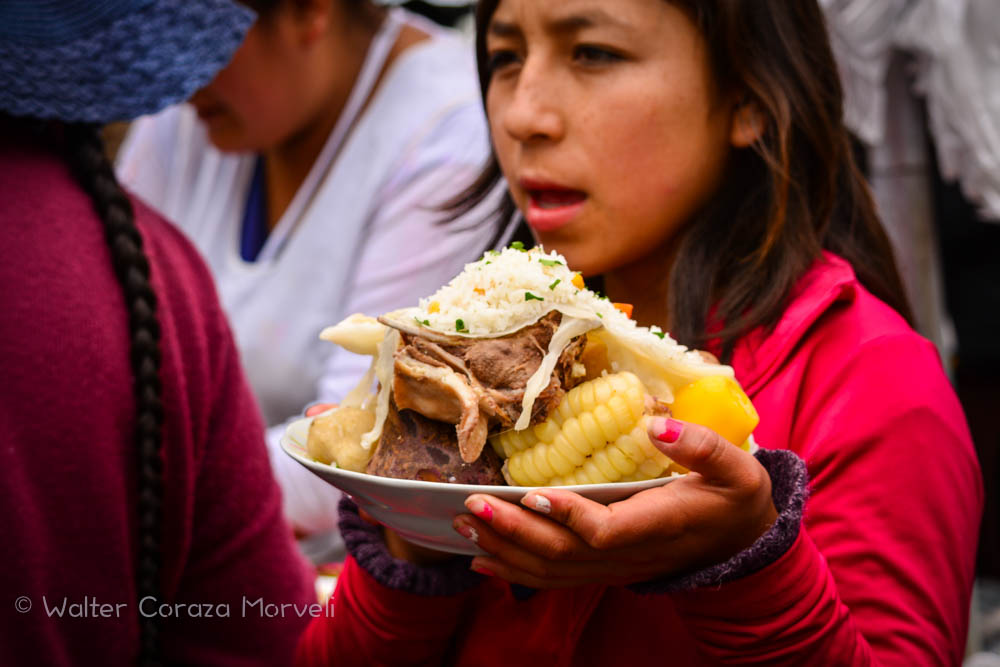Carnival means joy and fertility

All over the city of Cusco and its region you feel the power of carnival. Children and youths shine with joy as they play in the parks and in many of our city´s plazas, their balloons filled with water, colored flours, and cans of foams, also colorful at hand. These are their munitions for the play / war between boys and girls, men and women in this carnival.
This festival filled with flirting has much to do with fertility. Ice is broken so that people can converse across difference, and with their preferred weapons a little war opens between the sexes. Men chase women and women chase men, as if both were the birds that dance and fly as they court their mate.

That is why Cusco’s birthrate goes up suddenly nine months from now. In carnival women get pregnant and in November they have babies, the time when we celebrate the bread baby, the pan wawa.
As one of the songs intoned by our Rosita de Cusco “let us sing, let us dance our carnivals until colored water breaks. Which Cusqueño could have invented these joyful celebrations? He must have been drunk. From that green hill come down the sheep, some sheered and other without an ear.”
In addition, this festivity of carnival expresses our profound gratitude to our pachamama. The yunza is a ritual dance where people step rhythmically around a tree that was previously adorned with special gifts, balloons, mantas (shawls or carrying cloths), and colorful products. All of this is a symbol of gratitude to the earth for the wonderful gifts it makes us throughout the year; for the water, our food, and our lives.


As José María Arguedas said, “It is the greatest feast of the Indians and its music is the most beautiful of Peruvian folklore. It must have a distant and purely indigenous origin, though carnival is not like it once was.”
This feast brings us lots of memories of when we were children. In my neighborhood located on the north east zone of the city of Cusco we would get together each year with all our friends. Each would come out with buckets filled with water balloons. Some made spray guns with water hoses. Well-armed, we would go out looking for girls to wet. We found them on the corners of nearby neighborhoods. We would see groups made up of women and men at war. This all would begin from very early in the morning.
Afternoons, in those places were the yunza is put up, everyone would gather to share a delicious traditional puchero, the traditional dish of this feast. After that great, shared lunch, the older people would go home to get dressed in their typical dress from their native communities. Then, at around 3 pm, you could see the men and women in parallel lines ready for the circular dance. The sounds of the dancers’ feet, the colorful churning skirts, the ponchos and the hats, as well as the warak’as, the sling shots, would mix with the song, laughter, flutes, and drums of the feast. All of this would create a vibrant atmosphere.

The more people dancing the happier the deities, the better the harvest, and the more numerous the flocks of animals. That is an Andean belief that is maintained with the passage of time.
When the hatchet signals its upcoming victory over the tree to the beat of music, in the streets the fiesta explodes. People glow with joy, whether the skies are gray or not. When the tree falls, everyone there, including the dancers, through themselves on it to grab one or more of its gifts.
I remember how happy I was playing with my friends playing with water more and more as the main day of carnival approaches. The main celebration of Cusco’s carnival is held in our Plaza de Armas with a parade of public and private institutions. They offer the best of their dances, their troupes, and their pandillas (traditional bands of dancers). There, the tourists and the people of Cusco begin the celebration of our traditional carnival.

All of this refers to the sacred role of time in the commitment of the earth to the sky through rains and lightning. Like the couples we see this as the sky and earth having sex which leads to fertility. Whatever its origin, the yunza plays an important role in the life of our neighborhoods. As a result, it just grows in significance and meaning in this time of great celebration that is carnival.




